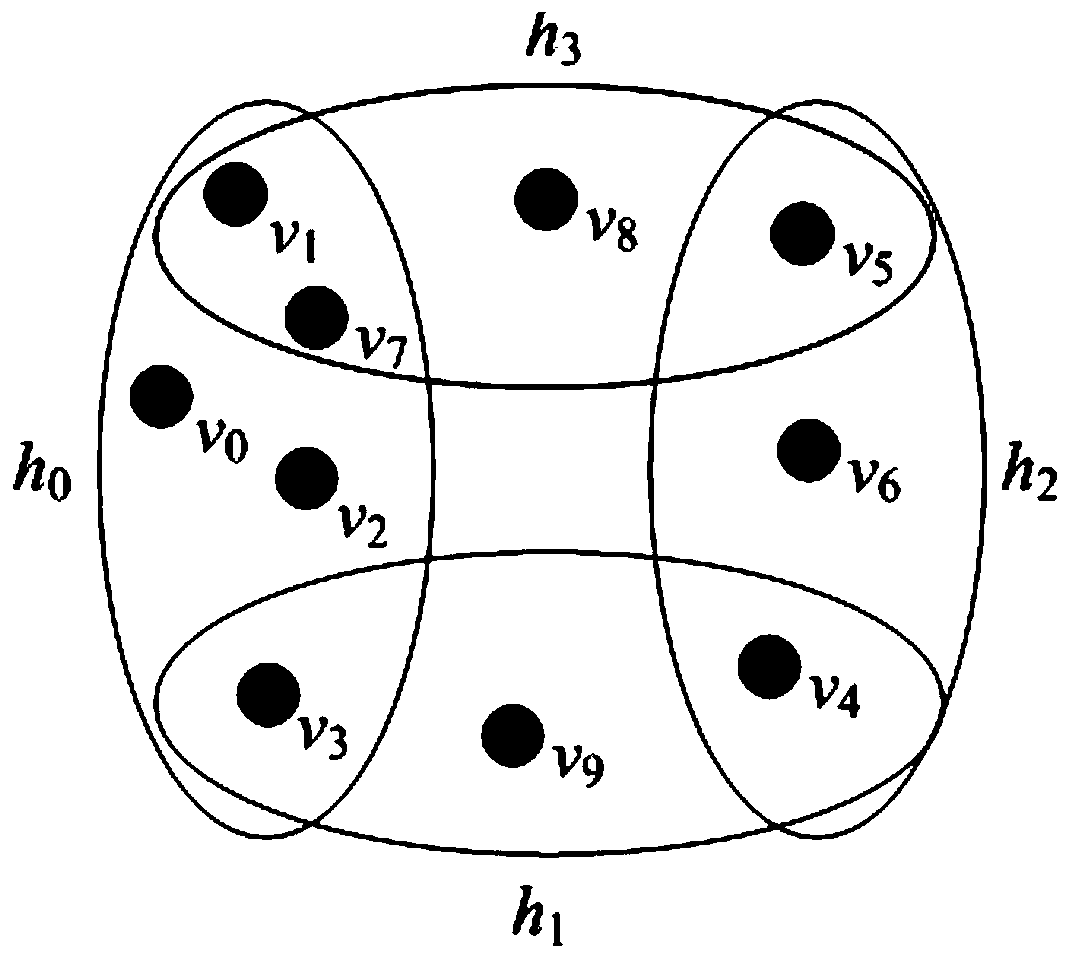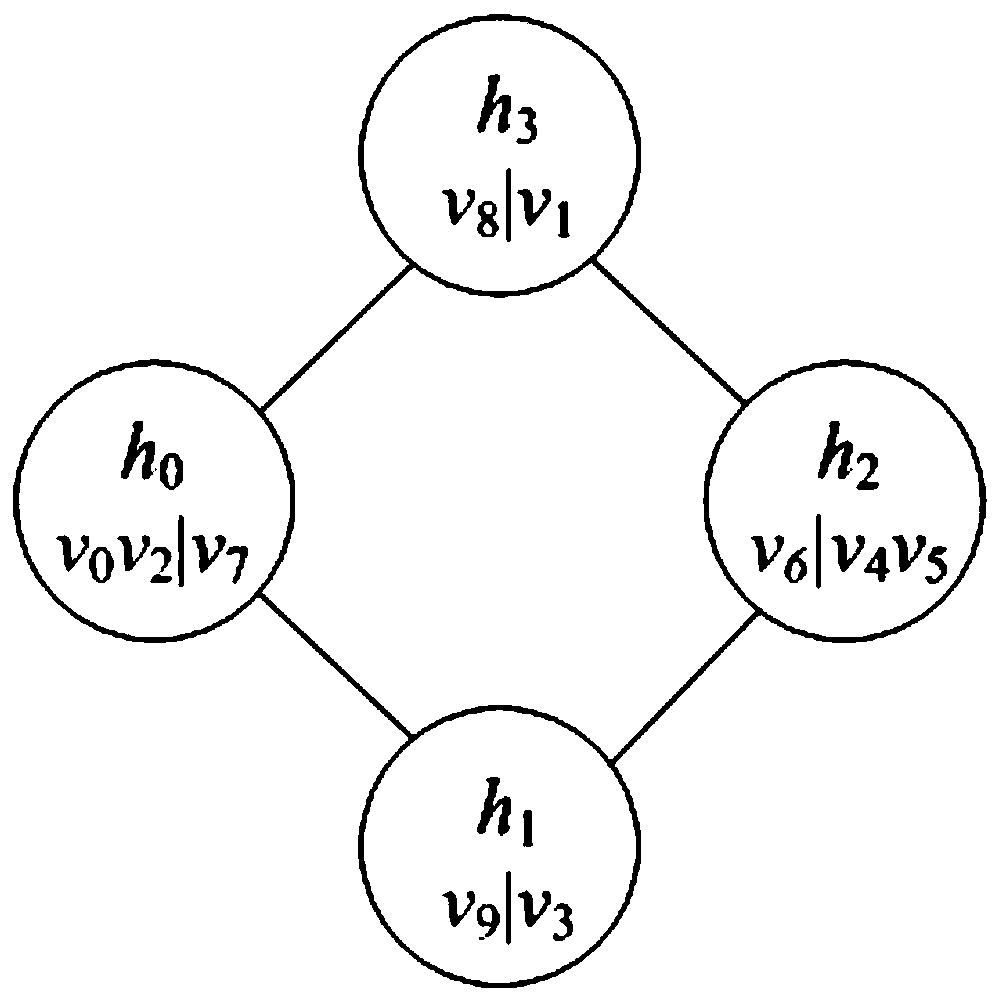Hypergraph iteration method based on two-hop graph and application of hypergraph iteration method
An iterative and super-edge technology, applied in the field of computer large-scale graph data processing, can solve the problems of lack of hyper-graph data optimization technology, processing efficiency is difficult to meet big data analysis, low efficiency of processing hyper-graph tasks, etc., to reduce the number of iterations , the effect of fast convergence
- Summary
- Abstract
- Description
- Claims
- Application Information
AI Technical Summary
Problems solved by technology
Method used
Image
Examples
Embodiment Construction
[0102] The present invention will be further described in conjunction with the accompanying drawings and specific embodiments.
[0103] If two hyperedges have a common vertex, then construct an edge between the two hyperedges, and this process can obtain the topology of the two-hop graph. For each hyperedge h in the two-hop graph i , hyperedge h i Need to save the size of its degree and assign to hyperedge h i saved vertices.
[0104] The present invention calls the hypergraph iterative processing method for processing the double-hop graph as the TH method. Assuming that a total of N supersteps are executed, in the first superstep, each hyperedge uses its saved vertex information to calculate the initial value of the hyperedge, and then generates a message to send to the neighbor hyperedge. In the 2nd to N-1th supersteps, each hyperedge updates its own hyperedge value with the obtained neighbor hyperedge message, and then generates corresponding messages for the neighbor h...
PUM
 Login to View More
Login to View More Abstract
Description
Claims
Application Information
 Login to View More
Login to View More - R&D
- Intellectual Property
- Life Sciences
- Materials
- Tech Scout
- Unparalleled Data Quality
- Higher Quality Content
- 60% Fewer Hallucinations
Browse by: Latest US Patents, China's latest patents, Technical Efficacy Thesaurus, Application Domain, Technology Topic, Popular Technical Reports.
© 2025 PatSnap. All rights reserved.Legal|Privacy policy|Modern Slavery Act Transparency Statement|Sitemap|About US| Contact US: help@patsnap.com



